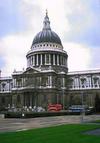UCLA_Ex_History_II_Final Flashcards
(45 cards)

c. 1745-50. Oak and walnut veneered with bois satiné; gilt-bronze mounts; marble top. The Getty Museum, Los Angeles.
French Rococo
more regency not an s scroll, has fat knees but is sprouting legs and has little slippers as feet. shows grain of wood. has key hole
key hole. monkey is stealing tabaco. geometric patter. more about the beauty and grain of wood.
show grains. inf on art nuevo. cross cuts of woods and then invert them. flame cut? would have 3-4 different tops to match color scheme of parties. would be pushed against wall. used for storage.
lacquer becomes very important in the decoration of furniture. made from tree sap, or crushed up bugs, bug poop, lac- means lactation. really bug juice. milk of tree. weather effects lacquer. chimouserie (made to look asian) or cut panels/screens brought over from china.

Gilles Joubert (1689-1775, French), bureau plat.
French Rococo

Jean Avisse, (1723-c.1796, French), fauteuil.
French Rococo
c. 1750-55. Gilded beechwood and modern silk upholstery. The Getty Museum, Los Angeles.
jacquard fabric, usually all one color guilded wood, did not do a lot of gilded wood
fauteuil= arms open
bergere= arms filled in

French Rococo, touile de jouy

Charles Voison, chantily porcelin manufactor,
French Rococo

Martin Carlin (c. 1730-1785, German/French) and plaques by Jean-Baptiste-Emmanuel Vandé
French Neoclassical (plaques, straight legs)
corners are rounded off. louis xvi was clumsy.
gallery edge so that you wouldn’t bump your tea cup off. tea was very expensive as was the serv porcelain. way of saying you could afford those things.
porcelain plaques were popular. they would even pull out boulle marquetry and replace it with the porcelain plaques. even if they didn’t fit. everything would be stamped by all the different guilds. they wanted credit and also a way to tax.

French Neo classical

English Reniassance
Hampton Court Palace, Surrey, England
medival looking,

English Reniassance
Great Bed of Ware

English Renaissance (symmetry)
Inigio Jones, Queens House,

English Renasiance
Wainscot chair.
the front legs having been shaped on a lathe,
the back legs being square-sectioned,
having arm supports,
lacking an upholstered seat,
a carved wooden back in a relatively complex design

English Baroque
Sir Christopher Wren,
St. Paul’s Cathedral.

English Baroque (neo-classical pumped up)
John Vanbrugh (1664-1726, British) and Nicholas Hawksmoor (c. 1661-1726, British),
Blenheim Palace.
Oxfordshire, England.

English Baroque
Charles II chair (other names: Carolean chair, Restoration chair)

English Baroque
Gate-leg table.

English Baroque
Cabinet on stand.
- Cabinet of pine and oak, with japanned decoration. Stand of silvered pinewood, with
yellow glaze of gum resin. Victoria and Albert Museum, London.

William and Mary chairs
higher back then the Charles II chair, legs lighten up, embroidery on back

Georgian
Richard Boyle (Lord Burlington) (1694-1753, British),
Chiswick House.
1725-29. Chiswick, England.

Georgian
Kent, Chiswick House, Red Room.

Georgian
Chippendale chair

Georgian
Robert Adam (1728-92, Scottish), Osterley Park House, Etruscan Room.
- Middlesex, England.

Georgian
Wedgwood vase.
1790-1800. Jasperware

Pilgram
- *Iron Works House.
c. 1680. Saugus, Massachusetts.**

Pilgram
Brewster chair.
c. 1640-80.








